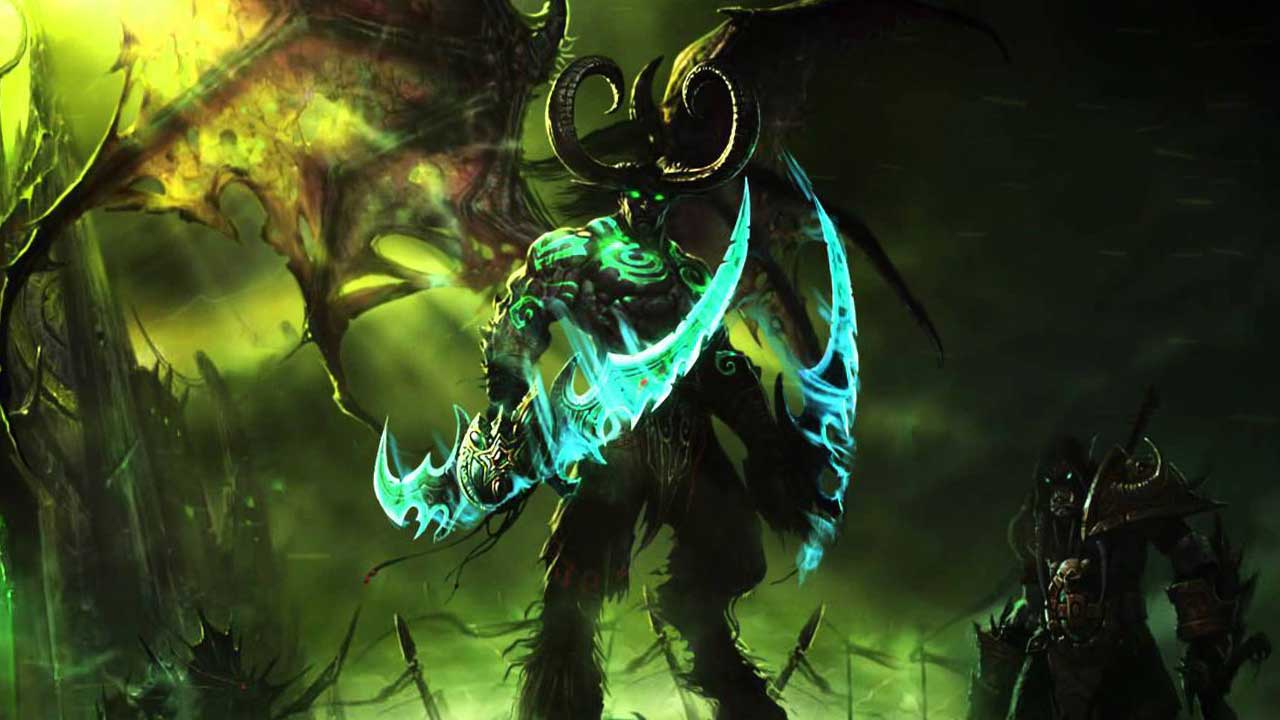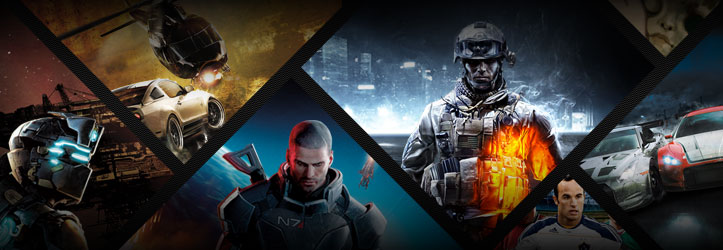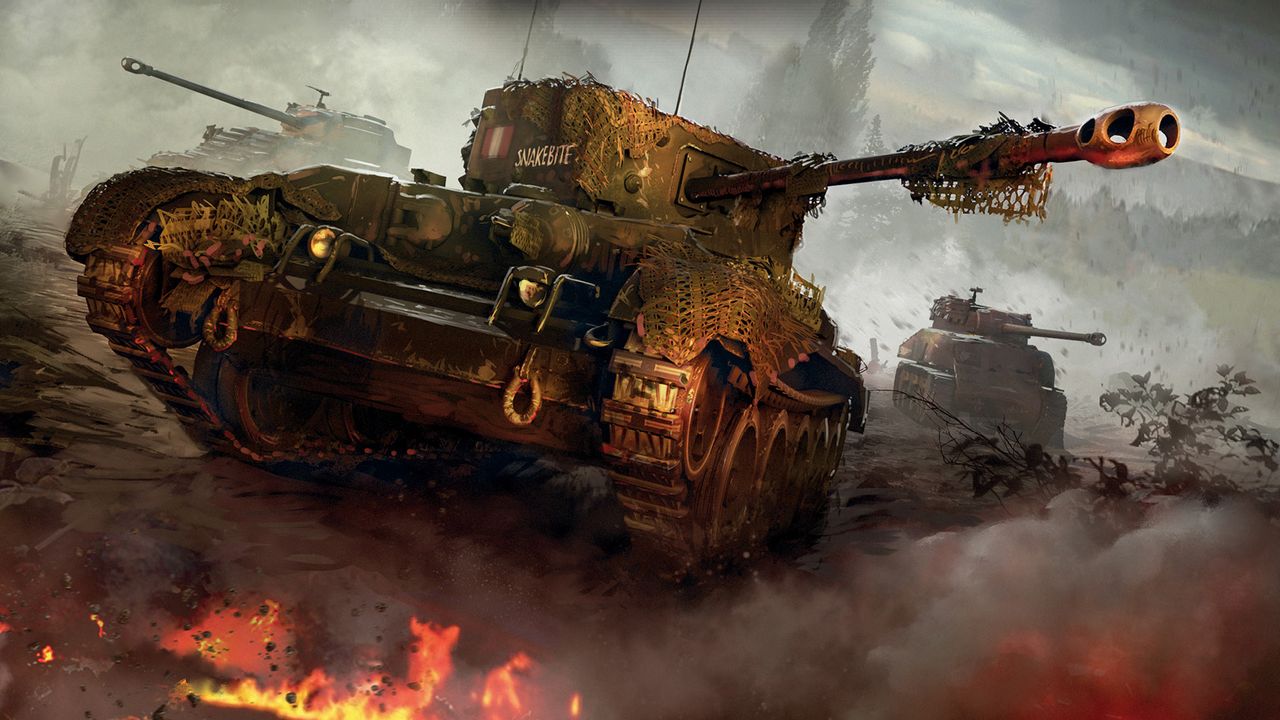To create a solid game, you need a good idea, a skilled development team, and a decent amount of money. These boxes are easy to check for big production studios — but for indie developers, it’s not all roses. For the most part, these studios are working with smaller, less experienced teams that don’t have access to the piles of money that an AAA dev might.
For a lot of indie devs, the only real asset they have to their names is a great idea. And because it can be hard to find the talent or funds to bring that idea to life, many developers stop with the idea because they don’t know what to do next. But it doesn’t have to be that way. There’s no obstacle too big for the inspired and passionate mind — so long as that mind has the information it needs to make a dream a reality.
In this step-by-step guide, I’m going to cover everything an aspiring indie developer could want to know about the game development process and what path they need to follow for their great ideas to take shape as tangible products. Read carefully, and you can help your game hit the market in 9 simple steps.
Step 1: Market Research
Market research is the first thing you should do to find a niche where you can succeed. Conduct a study to find games that are similar to the ideas/concepts you have in mind. Explore their strengths and weaknesses, community judgments, latest trends, trending niches, and other factors to get a picture of the gaming market’s current state. You should understand the audience’s needs and be ready to meet them, even if that means tailoring your idea to the industry’s changing needs.
But even if you know what the market wants, it’s hard to deny that advertising and branding are what push a majority of successful titles into the limelight. However, there are some great indie-developed games that have gone on to become smash hits purely because they met the market’s needs. Let’s take Minecraft, for example. Initially developed by a one-person team, this game took the industry by storm and has since become a multi-platform phenomenon.
This just goes to show that if your idea is competitive and appeals to a large number of gamers, it shouldn’t be too difficult to enter the gaming space. This is where market research comes in handy, as it will help you get some insight into what has the potential to be truly successful, and will answer questions like:
- What games are trending currently?
- How much competition is there in your chosen niche?
- Can your game offer something new that players haven’t seen before (a proprietary feature, fresh gameplay, an innovative structure, etc.)?
- What sort of funds will you need to create this game and compete in your genre’s space?
- How much money could you potentially make from this game?
We can use sports games as a great case study in this regard. After the original release of FIFA 14, which was the fastest-grossing game in the soccer series, a number of similar indie games were released soon after. All of them offered various functionalities that weren’t available in previous iterations. But with each new game that released, the niche became a little more cramped. Now it’s so saturated that the chances of seeing success in this corner of the industry is much slimmer than it was a few years ago.
Deep analysis of the market’s potential and your room for success/competitive improvement will help you get a better sense of whether or not creating a game in that space is a worthy endeavor. But once you’ve determined that your idea is a viable one that can probably compete in its genre, it’s time to move on to your game concept.
Step 2: Creating a Game Concept
The game concept is a clear and simple vision of the future game — made in the way that everyone involved can understand what its focus is and what it hopes to achieve. Producers, developers, artists, and even marketers must be able to comprehend the game concept and become familiar with what they are going to do and what angles they need to approach the game from.
A game concept is not only about how your project will look; it is also about how it will feel for the player and what development efforts you need to put in so that you can deliver the kind of experience you want to. Think of it as a kind of a road map for each department involved in game production.
Moreover, the game concept should provide information on how you are planning to act in case of force majeure and predicted or unpredicted situations. In other words, this is your exhaustive action plan that provides comprehensive answers to at least the following questions:
- What will you do if your game achieves some level of success?
- What will you do if the game fails?
There are a number of elements that should be included in your game concept other than goals, aesthetic ideas, and general gameplay concepts. You should also crunch some numbers so that you can outline a general budget in terms of both funds and effort — keeping in mind the potential risks and rewards involved.
This concept should also include the platforms you want to release the game for, and what audience you’re planning to target. This will not only let the team know how much effort will be required to develop this game, but it will also help them to decide what development approach to choose — cross-platform or porting. Moreover, knowing who the target audience is can get a significant influence on the art direction, UI, gameplay, and miscellaneous mechanics.
There’s one last thing that’s incredibly important to include in your game concept: your monetization strategy. Whether you plan on utilizing buy-to-play, premium services, in-app purchases, advertising, subscriptions, or a combination of these, this information is essential if you are planning to attract third-party investors like publishers, entrepreneurs, or friends.
As soon as your concept is ready, it’s time to think of something more material. I’m talking about the money, of course.
Step 3: Finding Funds
It is impossible to work just on your enthusiasm. Developing a game requires devotion, skills, and of course, a lot of money. Unless you have enough money to finance the entire project yourself, you will need someone (perhaps an investor or a publisher) to fund the game.
But nobody is going to open up their pockets and hand you their money just because you tell them you are about to make an awesome game. Your project can only hope to meet its budget needs if your investors see a high probability that they’ll get a satisfactory return on their investment. If your concept cannot prove that to potential stakeholders, then you might as well throw it away. It sounds harsh, but that’s just the way things work. You won’t get deep pockets on the hook unless your concept is thought out and convincing.
Sometimes, indie teams aren’t aware of what they’re getting into when they start hunting for investors and don’t quite understand how much of a say those investors will get in the final version of the product. So consider yourself warned — when you conclude a contract with the investor and take their money, you’re selling the ownership of your game (partly or completely). From that point on, even if your name is credited with head development accolades, you’re not the only one who will be making decisions about the game.
To summarize, getting money often means sacrificing creative independence. It’s not ideal, but it’s often a necessary compromise.
Once you’re prepared to make certain concessions, you have to figure out where to look for investors. Luckily, there are a number of places you can start your search.
Crowdfunding sites like Kickstarter, Patreon, and IndieGogo can be really useful in terms of non-refundable funds. You might be surprised by how many people are willing to donate some money to help prospective projects see the light of release.
You can also apply for start-up launch platforms that provide information, research, and assistance with all aspects of getting a gaming business launched — including ways to connect with investors. AngelList, for instance, is a great way to learn about potential investors and let them learn about you. Create a profile that includes specific info about the company, and explain your game concept if you want to increase your chances of getting noticed.
Business accelerators and incubators could also be useful for your game to enter the market. Incubator programs are focused on conceptualization, the formation of a team, and creation of a prototype; meanwhile, accelerators help indie teams develop a marketing strategy and put a game on the market. Both programs provide consulting and mentoring services, conduct various master-classes, internships, workshops, and even occasionally assist with arranging offices and technical equipment.
Step 4: Forming a Team
As much as you might want to, you obviously can’t do everything yourself. So you need a team of like-minded individuals who are willing to collaborate on your project and make sure it’s the best that it can be. You should build partner relationships with each team member, understand the skills and capacities they have at their disposal, and make sure everyone is on the same page with regard to what game you hope to have at release and what audience will be playing it.
The team should work as a holistic mechanism. In order to achieve this, you’ll need to study your team members to identify their strengths and weaknesses and gauge the scope of their knowledge. If you’re working on a larger scale project, you may also want to consider hiring professional managers who will help you control and administer the team, as well as experienced marketers who will be in charge of tracking the latest trends and help you promote the game.
One alternative to this is to outsource most of that work and find a team of specialists to handle different aspects of the game’s development (or even promotion if needed). Many publishers and game development companies such as Sony, EA, Ubisoft, Namco, Nintendo, and even Blizzard outsource the creation of their popular titles to outside studios. Sometimes different parts of the game are crafted by different teams depending on their skillset.
Outsourcing companies like Game-Ace, a Ukrainian-based game development company, usually provide a full range of services from developing game concepts to implementing monetization strategies. But if funds are a limiting factor, this obviously won’t be something you can do.

Step 5: Choosing a Game Engine
The game engine is a program component that allows for creating and launching games. In other words, the game engine provides developers with tools and frameworks to create most of the components for a game and put them all together.
Just as games are diverse, there are many game engines that can simplify and facilitate your development process. Even though some teams prefer to create proprietary engines that satisfy their specific needs, the market still has a lot to offer. The choice depends on the goals and objectives you set when creating the game concept. Here are a few critical questions to ask when choosing a programming environment that will point you in the right direction:
- How much time do you have until the deadline? Some game engines require more time and knowledge than others.
- What programming languages are you familiar with? Depending on your primary programming language, you may need to favor one game engine over another, as acquiring new skills is a time-consuming (and possibly costly) task.
- What type of game are you planning to release (2D, 3D, VR, AR or MR)? If your game will be based on emerging technologies such as VR or mixed reality, the wise choice would be Unity, because it is geared toward these specific technologies.
- How many platforms are you willing to target? Cross-platform development is a great strategy to reach a broader audience and thus accumulate bigger profits. However, some games are much more fun (and functional) if they are designed specifically for one platform, like consoles or PCs.
- How do you plan to monetize your game (advertisement, in-game purchases, pay-to-play, etc.)? The pro versions of many popular game engines will demand royalties for the usage of the programming environment or from further sales of the game after the stable release. For this reason, it’s better to think about the fair price for the game beforehand and calculate all the expenses before choosing your engine.
Most game engines use the family of C languages as the main programming shell. Among them are Unreal Engine (UE), which uses C++; Unity, which focuses on JavaScript and C#; and CryEngine, which also requires C++ knowledge.
Despite the complexity of C++, the graphical quality you can get from using it is truly amazing. It is widely used for AAA gaming, which has a high threshold of expectation when it comes to aesthetics.
Unreal Engine
Unreal is a quite popular programming environment among first-person shooters and role-playing games. Its powerful functionality is suitable for designing detailed game levels and environments directly in the engine’s editor — and that’s really its main advantage over other engines.
The Unreal Engine also offers a Blueprint Visual Scripting System that’s great for novice programmers and allows them to create a project without writing a string of code.
Unity Engine
Unity’s game engine has a wide range of opportunities with a handy and user-friendly interface. The main advantage of Unity is its ability to develop cross-platform games. It is also suitable for porting an existing game to a broad spectrum of platforms.
Unity supports integration with many popular 3D tools such as 3DS Max, Maya, Blender, and etc. After the fourth version of the engine was released, the engine also started working with 2D software and supporting 2D physics.
Despite the fact that Unity works with many external 3D editors, its own graphic editor has a very limited number of functions. For example, there is zero opportunity to develop a 3D model — with the exception of primitive geometrical figures — inside the editor. The 3D content should be done with a third-party editor and then integrated into Unity. However, a large library of objects that can be purchased and integrated into the game engine could partly solve this issue.
Cry Engine
Another game engine that is worth mentioning is CryEngine. It is an incredibly powerful tool that was initially developed by Crytek for its shooter series, Crysis.
This engine can crank out some seriously high-quality graphics. Some even consider it to be better than Unreal Engine. It’s also powerful enough for MMOs and RPGs. However, even advanced developers will have to spend a lot of time exploring the working pipeline. If your knowledge and proficiency are in question, you better choose a more user-friendly game engine.
Purchasing Your Engine
The basic versions of these engines are free of charge. But for many games, you’ll have to buy a pro license for a set cost. In Unreal Engine, for example, you’ll have to pay a 5% royalty fee based on the gross revenue for the usage of UE. A pro license for Unity costs $125 per month. And the price for commercial usage of CryEngine is $9.99 per month.
Step 6: Choosing a Monetization Strategy
Generating significant profit from a game is not an easy task in today’s market. Of course, only truly thrilling gameplay and graphics can ensure a client’s retention. But the right monetization strategies can help improve the user’s experience while making sure that money flows into your pockets by unobtrusively helping players decide to spend some cash.
Today, there are many monetization strategies, and each of them has pros and cons.
Freemium (Free-to-play)
In this approach, the game can be downloaded free of charge. But the player can purchase additional features, access more levels or events that extend the gameplay, and rack up cosmetic items that change the look of their game. This is often called the “premium” subscription.
This model has successfully applied to games like Dota 2, SMITE, World of Tanks, and Hearthstone.
Paid Games (Paymium)
This strategy usually refers to games that require a one-time payment when purchasing the entire game with all functionalities in it. Paymium is a common choice for console and video games across the board — from AAA games like Call of Duty and Mass Effect to indie ventures like ARK: Survival Evolved and The Binding of Isaac.
In-app purchases (IAP)
This term is almost always directly related to free-to-play games. IAPs allow players to buy additional equipment, costumes, weapons, or skills to improve their game by using real-world money.
This is most popular pricing strategy among mobile games like Clash of Clans, Candy Crush Saga, and Slotomania.
Advertising
In-app advertisements are another monetization model that has found a permanent home in mobile gaming. This method uses various targeted ads inside the game to reach an audience — a strategy that we’ve seen in games like 2048.
Subscription
This monetization strategy asks players to pay a set amount of money on a monthly/quarterly/yearly basis to access exclusive content that is not available to other players.
A subscription model is quite common for MMOs and MMORPGs, and it’s seen success in games like World of Warcraft, EVE Online, and Final Fantasy XIV.

Usually, game production studios and publishers choose a combination of these pricing models. The most popular blends are free-to-play + IAP and free-to-play + advertising.
Before deciding upon your winning strategy, though, you’ll want to explore what options have been proven to work for the popular games in your niche, and then choose one that can be most beneficially applied to your genre and type, while ensuring that you maximize your profit margins.
Step 7: Marketing And Advertising
The success of every gaming project depends on the promotional efforts put into its marketing campaign. In this regard, marketers must act to the fullest extent of their capacities in order to make sure that a game receives as much publicity as possible.
Marketing pushes might include video content (game trailers, promo reels, gameplay clips, etc.), written content (articles, press releases, news, etc.), official websites or blogs, and social media pages (Facebook, Twitter, Instagram, Youtube, etc.). All of these various platforms will come handy in when it’s time to generate intrigue in your audience and get them anticipating your game’s release.
Moreover, professionally created promotional campaigns can help you reach the revenue goals that you set in your game concept by targeting the right audience, enticing various communities in the gaming industry, raising brand awareness and generating gamer hype, and ultimately driving more sales.
With over 600 million gamers hanging out on Facebook and Instagram, you have an almost unlimited potential to engage more of your target audience, and promote gaming events — thus increasing potential revenue.
Step 8: Game Production
After the main blueprint of the game is ready, the larger group of artists, designers, programmers, and producers are brought into the mix. At this step, your team mostly works to develop the assets and main functionality, including the game environments, leading and supporting characters, and establishment of thrilling gameplay. The producers will supervise the artists and programmers to ensure they work together as a team and have the same vision for the project.
Typically, the game design document, game specifications, and other documentation are completed, but the game designer is still there to make sure all the details are considered and all the features implemented properly. Once all required functionality is ready, the team is usually optimizing the game — for instance, reducing the number of polygons to shorten the loading time or adding more lighting to a cut-scene to improve the picture.
Step 9: Game Release
Many consider this to be the most critical part of game production. It certainly is, but if all the previous steps are done properly, there should be no problem with this one.
Once you reach this step, may be time to contact publishers and ask them to take your game under their wing. The large game publishers could help you distribute your game or publish it across many influenced stores using their contacts — so getting in touch with programs like the Square Enix Collective can really go a long way in this regard.

No one can guarantee your success, of course — and let’s be honest, gaming is so developed today that the chances of a non-AAA game being a smash hit is somewhat marginal. Even if your game does not perform as expected, you can always improve it by analyzing the feedback from players and publishers and working to improve that game through updates, or apply those lessons to your next project.
Have the courage to give up something that is not working for your audience and explore new opportunities. Success comes to those who fight hard and are willing to take the necessary risks.
The development process is not easy and is quite time-consuming; however, you should not shelve your game idea just because the road ahead seems long and hard. Work through the concept, find a team, and design the game that will make everyone play by your rules.











Published: Aug 31, 2017 06:07 am